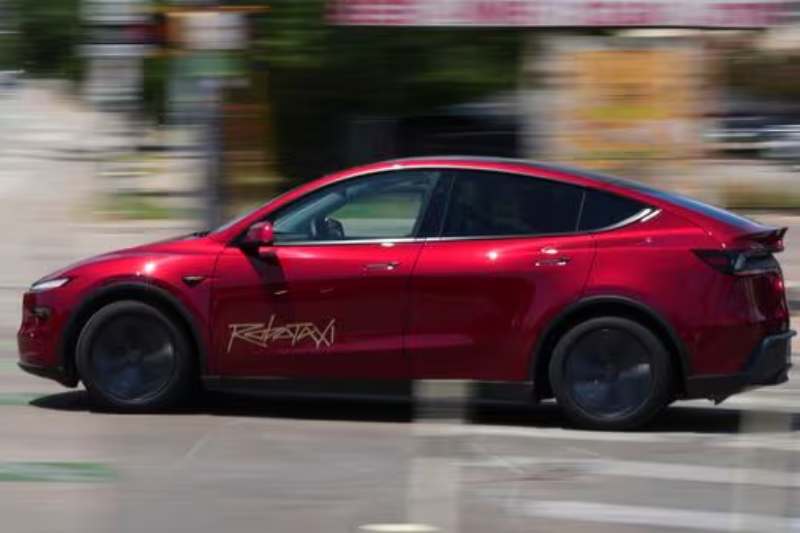
Tesla has officially launched its highly anticipated robotaxi service in Austin Texas, turning the dream of fully self-driving cars into a real-world experience. This marks a huge leap for Tesla’s autonomous vehicles, placing them into public service for the first time.
Let’s take a closer look at this milestone in Tesla's journey toward an autonomous future.
On June 22, 2025, Tesla began operating its robotaxi pilot program in Austin, using modified Model Y electric vehicles equipped with its Full Self-Driving (FSD) technology. The autonomous cars are currently running in a restricted area within the South Congress neighborhood.
Only a limited number of pre-invited users have access to hail these rides. But for Tesla, it’s a powerful step forward in its effort to dominate the autonomous ride-hailing market in Texas.
Tesla’s self-driving taxi service in Austin is unique. Unlike other autonomous vehicle companies like Waymo and Cruise, Tesla autonomous vehicles don’t use LiDAR or radar. Instead, they rely solely on a camera-based neural network system, powered by Tesla’s custom-built AI chips.
Although there’s no human driver, a Tesla safety operator is seated in the passenger seat. This person is tasked with monitoring the vehicle’s performance and can activate a manual stop system if needed. It’s a hybrid between hands-off automation and human oversight—for now.
Tesla’s robotaxi fare in Austin is a flat $4.20, significantly undercutting most traditional rideshare options. The service operates between 6 a.m. and midnight.
Currently, only adults over the age of 18 can participate. Eligible riders must receive an invitation from Tesla and have an active Tesla account to book rides in the app. This exclusivity keeps the trial controlled as Tesla gathers real-world performance data.
Launching the Tesla robotaxi service in Austin Texas wasn’t a random decision. Austin is home to Tesla’s Gigafactory and boasts a progressive tech culture that’s open to innovation. Moreover, Texas has relatively relaxed regulations around autonomous vehicle testing and deployment—at least for now.
However, from September 1, new Texas AV laws will take effect. These include mandatory safety documentation, fleet registration, and emergency procedures for driverless vehicles. Tesla will need to adapt quickly to maintain compliance.
While Elon Musk has touted Tesla’s Full Self-Driving cars as the future of transportation, regulators are closely watching this rollout. The National Highway Traffic Safety Administration (NHTSA) has asked Tesla to submit operational data and safety documentation for its Austin pilot.
Tesla claims its technology is more scalable and cost-effective than competitors thanks to its camera-only approach. But critics argue that omitting radar or LiDAR may increase risk in poor visibility or unpredictable traffic situations.
Elon Musk has described the launch as a “historic moment,” and said the Tesla robotaxi rollout in Austin is just the beginning. A dedicated robotaxi vehicle, designed without a steering wheel or pedals, is expected to be unveiled in August 2025.
The company hopes to expand robotaxi operations to more cities once the technology proves itself in Austin. However, many experts say widespread adoption of self-driving taxi services in Texas and beyond could still take years due to legal, technical, and ethical challenges.
Initial reactions from users who have taken a ride in Tesla’s self-driving taxis have been mostly positive. Riders said the cars handled most traffic smoothly, though some noted odd behavior at stop signs and turns.
The novelty of being driven without a human at the wheel is both thrilling and slightly unsettling for some. Social media posts tagged #TeslaRobotaxi and #SelfDrivingAustin are quickly going viral, showcasing what may soon become an everyday experience.
If the Tesla robotaxi pilot in Austin Texas continues without major incidents, the future of urban transportation may be permanently changed. The promise of autonomous ride-hailing services is lower costs, fewer accidents, and greater accessibility.
Still, Tesla has a lot to prove. It must convince regulators, win public trust, and continue developing its software to handle a wider range of driving scenarios safely.
The official launch of Tesla's robotaxi service in Austin Texas is more than just a product release—it’s a glimpse into a new era of transportation. By deploying fully self-driving cars in a live urban environment, Tesla is challenging not only the status quo of mobility but also its competition in the autonomous space.
Whether this bold step puts Tesla ahead of the AV game, or introduces new hurdles, one thing is certain: Austin just became the testbed for the future of driving.